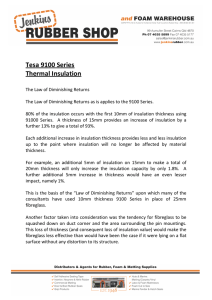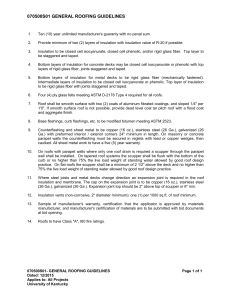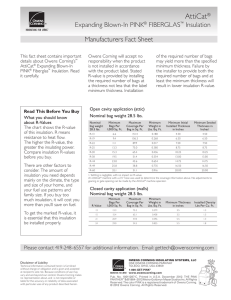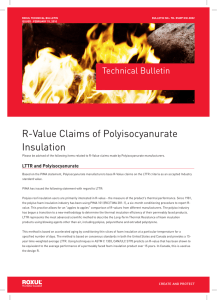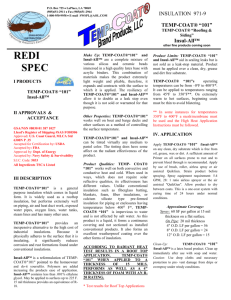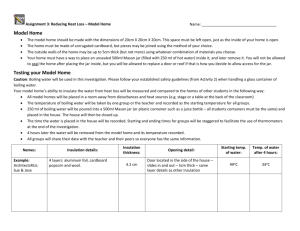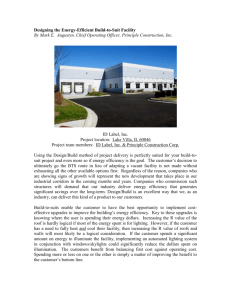Bulletin AE2003-02
advertisement
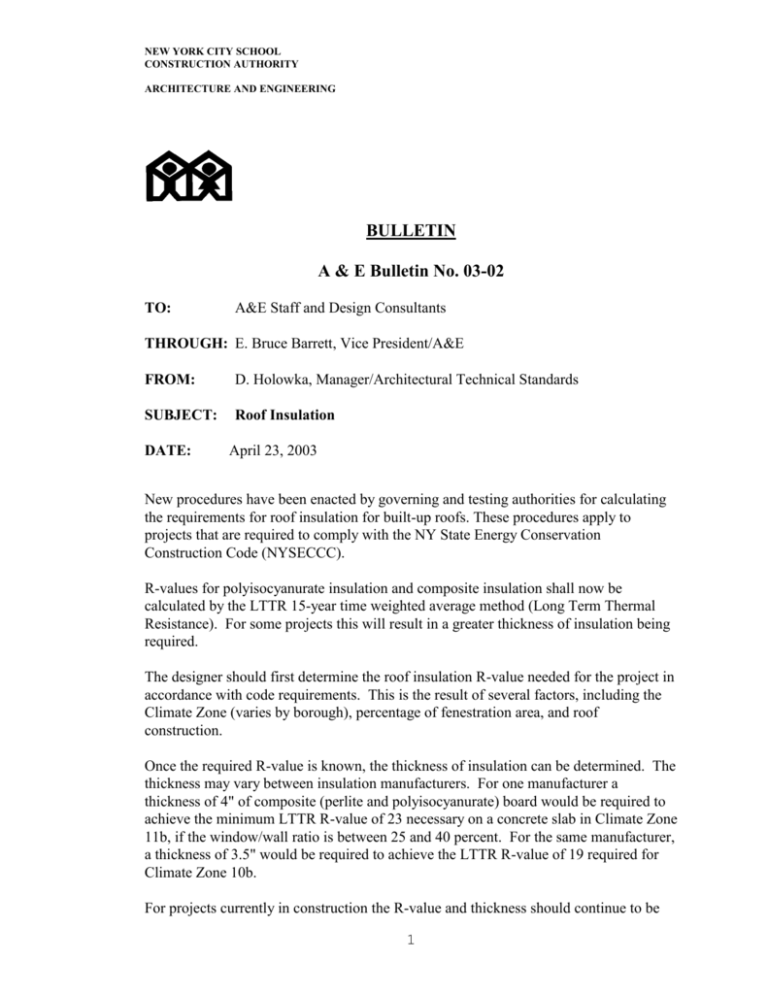
NEW YORK CITY SCHOOL CONSTRUCTION AUTHORITY ARCHITECTURE AND ENGINEERING BULLETIN A & E Bulletin No. 03-02 TO: A&E Staff and Design Consultants THROUGH: E. Bruce Barrett, Vice President/A&E FROM: D. Holowka, Manager/Architectural Technical Standards SUBJECT: Roof Insulation DATE: April 23, 2003 New procedures have been enacted by governing and testing authorities for calculating the requirements for roof insulation for built-up roofs. These procedures apply to projects that are required to comply with the NY State Energy Conservation Construction Code (NYSECCC). R-values for polyisocyanurate insulation and composite insulation shall now be calculated by the LTTR 15-year time weighted average method (Long Term Thermal Resistance). For some projects this will result in a greater thickness of insulation being required. The designer should first determine the roof insulation R-value needed for the project in accordance with code requirements. This is the result of several factors, including the Climate Zone (varies by borough), percentage of fenestration area, and roof construction. Once the required R-value is known, the thickness of insulation can be determined. The thickness may vary between insulation manufacturers. For one manufacturer a thickness of 4" of composite (perlite and polyisocyanurate) board would be required to achieve the minimum LTTR R-value of 23 necessary on a concrete slab in Climate Zone 11b, if the window/wall ratio is between 25 and 40 percent. For the same manufacturer, a thickness of 3.5" would be required to achieve the LTTR R-value of 19 required for Climate Zone 10b. For projects currently in construction the R-value and thickness should continue to be 1 calculated according to the procedures in place at the time the project was designed. Projects that are not in construction yet should follow the new procedures. LTTR Rvalues should be used to select insulation for all projects that are not yet in construction, whether or not the project is required to conform to the NYSECCC. The thickness of insulation will impact the overall height of other building elements such as flashings, door sills, and perimeter roof barriers (parapet or railing). Since the total thickness of the roofing assembly may vary with each project, the designer should specifically dimension those required minimum clear heights above the finished roof (including membrane, insulation, stone, pavers, etc.). The designer should confirm that the parapet, or other protective railing or guard, is at least the height required by the NYC Building Code. For existing buildings the parapet height should be increased if the thickness of the new roofing assembly results in a parapet height less than the Code minimum. *** cc: W. H. Goldstein, P. McGlinchy, D. Reddan, S. Ruscio, M. Rebholz, A&E Staff, A&E Bulletin Board. EBB:DH:MF:mf 2
